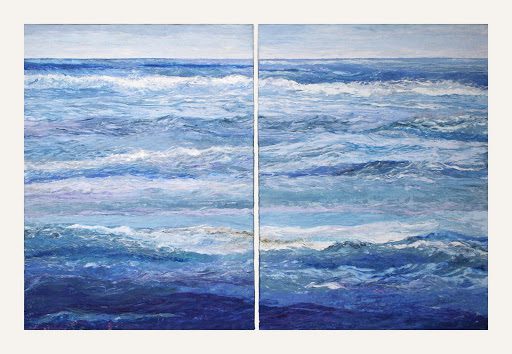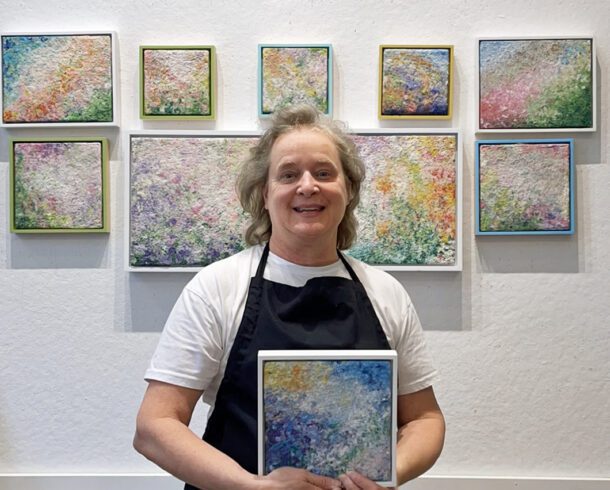MY STORY, or how did I get here anyway?
If there is one question I am asked more than any other, it’s this. Why would you make paper when you could go out and buy it?
The short answer is this:
I began my “career” as a pulp painter as an art student too broke to purchase commercially made paper, I hooked up a garbage disposal in a corner of the printmaking studio-pre-OCEA, it was the 1980’s after all-and used it to grind scraps of discarded paper into soggy pulp. At first, I formed the pulp back into some resemblance of paper, but eventually I began using different colored pulps to paint with. In this way, I took a material that had been intended to be the recipient of media and flipped it into the medium itself. My future as a pulp painter was off and running before I even had a name for what I was doing.
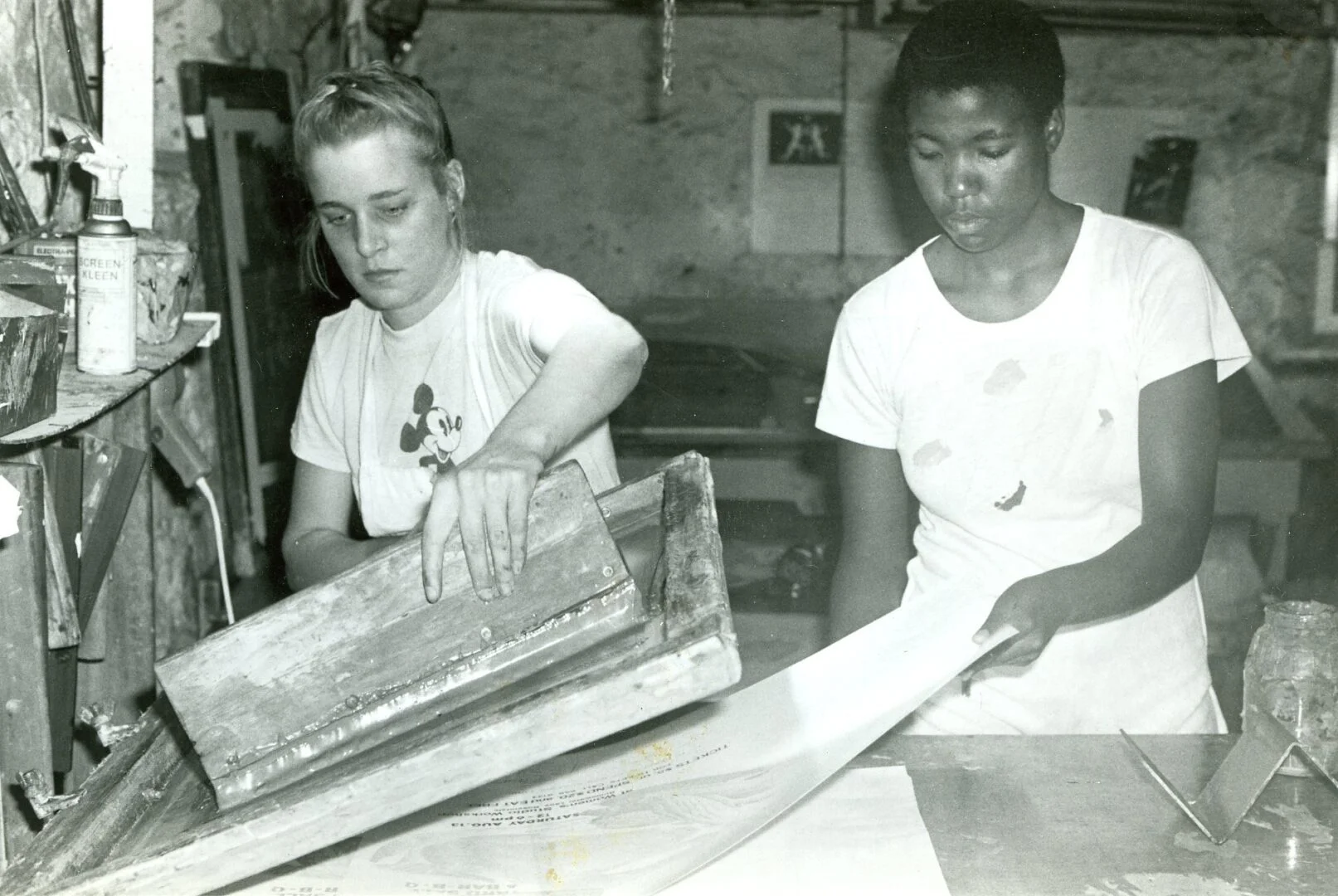
Working on a silkscreen print. I couldn’t find a photograph of me in the studio at SUNY Oswego where I was a student. I found this photo while I was an apprentice at the Women’s Studio Workshop, summer, 1983. I wrote a blog about this experience, which I remember as being very hard, and very worth it.
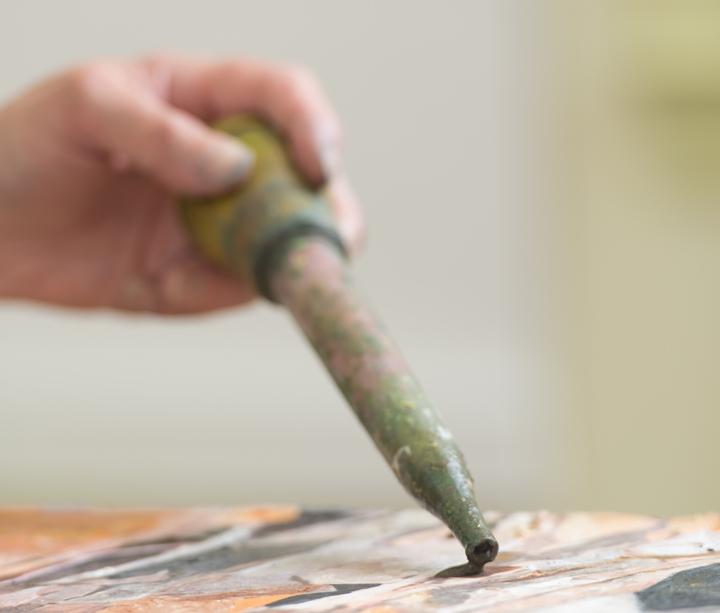
My go-to “paint brush,” a turkey baster. I suck the pulp up into the baster and gently squeeze it through the small opening. This process is like a sand painter who lets the colored sand dribble through their hands into an astonishingly controlled pattern. A twist on the old expression that it’s all in the wrist.
And what did I use as my paintbrush? Plastic spoons and turkey basters of course! With these simple tools I learned to distribute the pulp across the surface of the canvas to recreate the subject matter that most intrigued me: our emotional pull toward natural environments. From roiling seascapes and natural landscapes to blooming gardens and iridescent abstract forms, I found a way to express these places using lumpy pulp, turkey basters and plastic spoons.
Viewers often comment how much they love the texture in my artwork. My subject matter is nature, which is full of texture, color, and shapes. These qualities create the emotional pull nature has on us. The medium I currently use is abaca, an organic fiber used since ancient times to make rigging for ships, clothing, paper, tea bags, and more recently PPE during the pandemic. By using this organic material, I can recreate the many textures and colors of nature.
Many years have passed since those early days, but I still find myself intrigued by this expressive medium with all its perks and challenges. Little did I know way back then that my artwork would one day grace U.S. Embassies, university libraries, corporate boardrooms, and hospital nurses stations.
I went on to earn a Master of Fine Art, and a PhD in Art Educaiton. I have been a working artist and college level art educator for 35+ years.
If you would like to join me on my jouney, and purchase a work of art, or discuss a commison, please contact me. I’d love to work with you.
To learn more about my pulp painting process, watch the videos below.

Plastic spoons work wonders for adding detail and texture. I can blend the colors just enough using the palm of my hand as a palette and then gently applying to colored pulp onto the surface of the work.
A step-by-step explanation of my pulp painting process.
How I create my artwork
The most common question I hear from other artists, galleries, and collectors is “How do you create your artwork?” That is, how do I paint with pulp and how do I make the paper on which I paint? In response, I have outlined, step-by-step, the process of creating one of my paintings.
People are often surprised when they realize how very physical a medium paper pulp is, due to its weight and texture. It is shapeless and colorless when first beaten, and because it remains immersed in water until needed, it is also cold and sticky to the touch. As the creative process unfolds, the pulp takes on a marvelous life of its own. The unique properties of the pulp remain evident in the work and help to define it with texture and unevenness. When the pulp comes together as one unit or composition, a work of art exists. Even though I am constantly learning new ways to express myself with the pulp, years of working with this material allow me to experience its potential and limitations. These years of experience have yielded, and refined, the pulp-painting process described below.

STEP ONE: Forming the base sheet
First, I beat a mixture of 1 lb. raw cotton and ½ lb. bleached abaca with approximately 10 gallons of water for an hour in a paper beater (called a Hollander due to its resemblance to the water wheel commonly seen in the Netherlands). Liquid sizing, which strengthens the paper and protects the surface from pollutants, is added to the pulp before removing it from the beater. This step is especially important should the painting be hung without glass. I then empty the pulp from the beater into a 40-gallon barrel and, using a pan, pour it onto polymer screening which has been laid flat on the surface of a vacuum table.
The grids in the screening allow excess water from the pulp to drain and eventually exit through an opening in the bottom of the table. Once the pulp is poured, I fold over the screening at the corners to make a more even sheet.
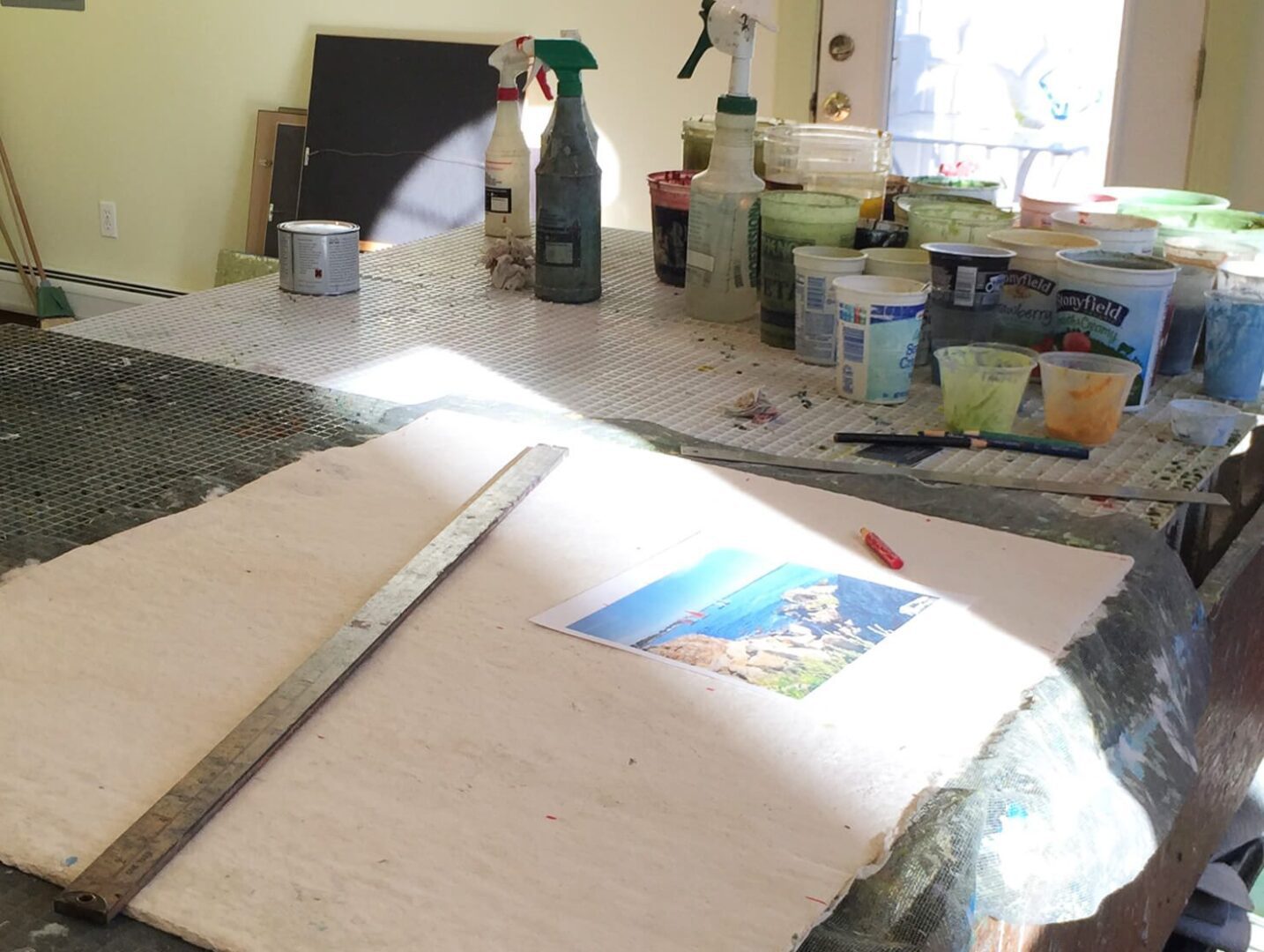
STEP TWO: Applying the middle-ground colors
After the sheet is formed, I add background colors by pouring layers of different-colored pulps, which have been stored in 5-gallon buckets, on top of the base sheet (Fig. 3). I have already tinted the colors with pure, non-fading pigments such as cobalt, carbon, and titanium. Because the colors are light-fast (non-fading), the finished painting can be hung with or without glass, in direct sunlight. For the more detailed, middle-ground areas, I paint using a turkey baster or bottle of over-beaten abaca.
I use the turkey baster to extract the water/pulp mixture from smaller containers I mix the over-beaten abaca, which has been beaten for up to six hours, with the pure pigment and Tororo-neri (a sticky extract from the root of the Japanese okra plant). I funnel this mixture into a squeeze bottle whose small opening allows for more precise mark making.
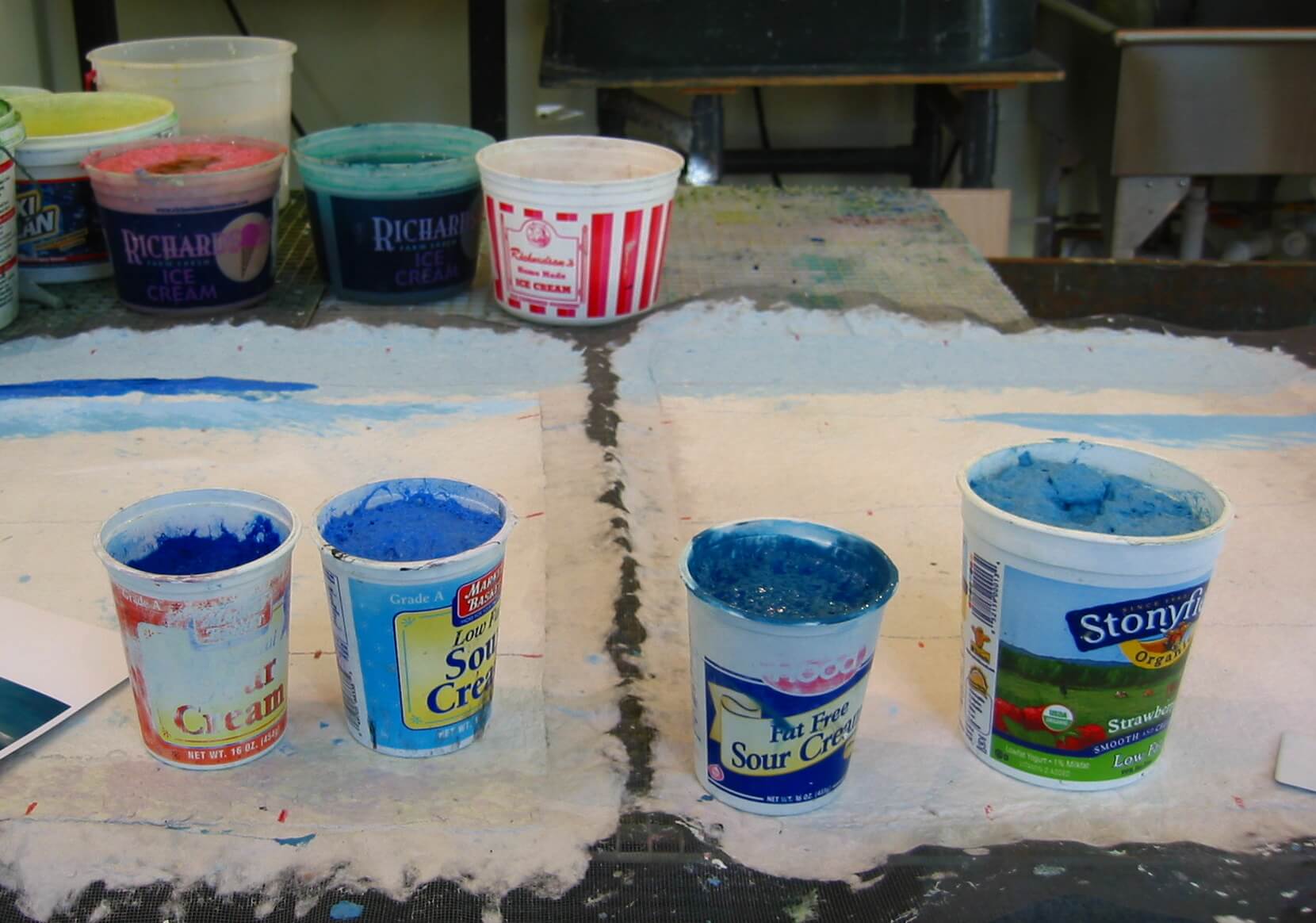
STEP THREE: Using overbeaten abaca
As the painting progresses, I add layers of overbeaten abaca to the background colors. Abaca is a fiber from the inner bark of the banana tree. It is extremely strong, acid free, and holds color beautifully. Another use for abaca fiber is to make rigging for sailing vessels and tea bags (ever wonder why tea bags don’t fall apart when dipped in hot water)? Using abaca allows for the many textures I am able to get in my work. My work is largely representational with nature imagery as my primary subject. Nature is not only 3D but full of a variety of textures. By using this versatile medium that has a textured quality, I am able to recreate the many textures of nature in my work.
The process of layering colored pulp, over-beaten abaca, and collage elements continues through the evolution of the artwork.
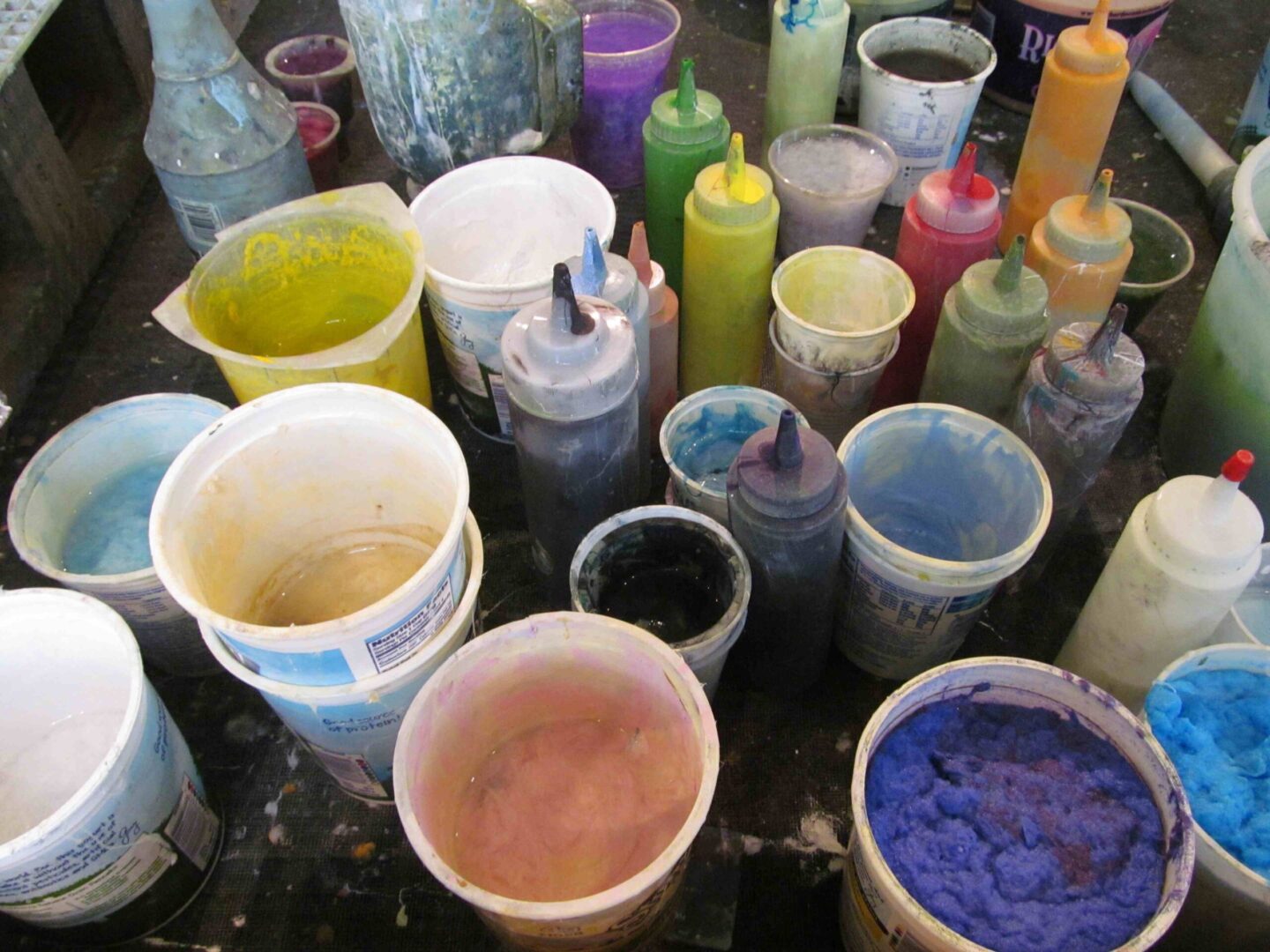
STEP FOUR: Painting the foreground
After the background and middle ground are complete, I apply the final layer, or foreground. At this time, I also configure the last of the collaging, turkey basting, and application of over-beaten abaca. I find this to be the most painstaking part of the process; the outcome of this final stage often determines the success of the overall composition.
If I deem a painting unsuccessful, it is recycled back into pulp by being shredded and re-hydrated in the Hollander. The newly recycled pulp can then be used for future base sheets.
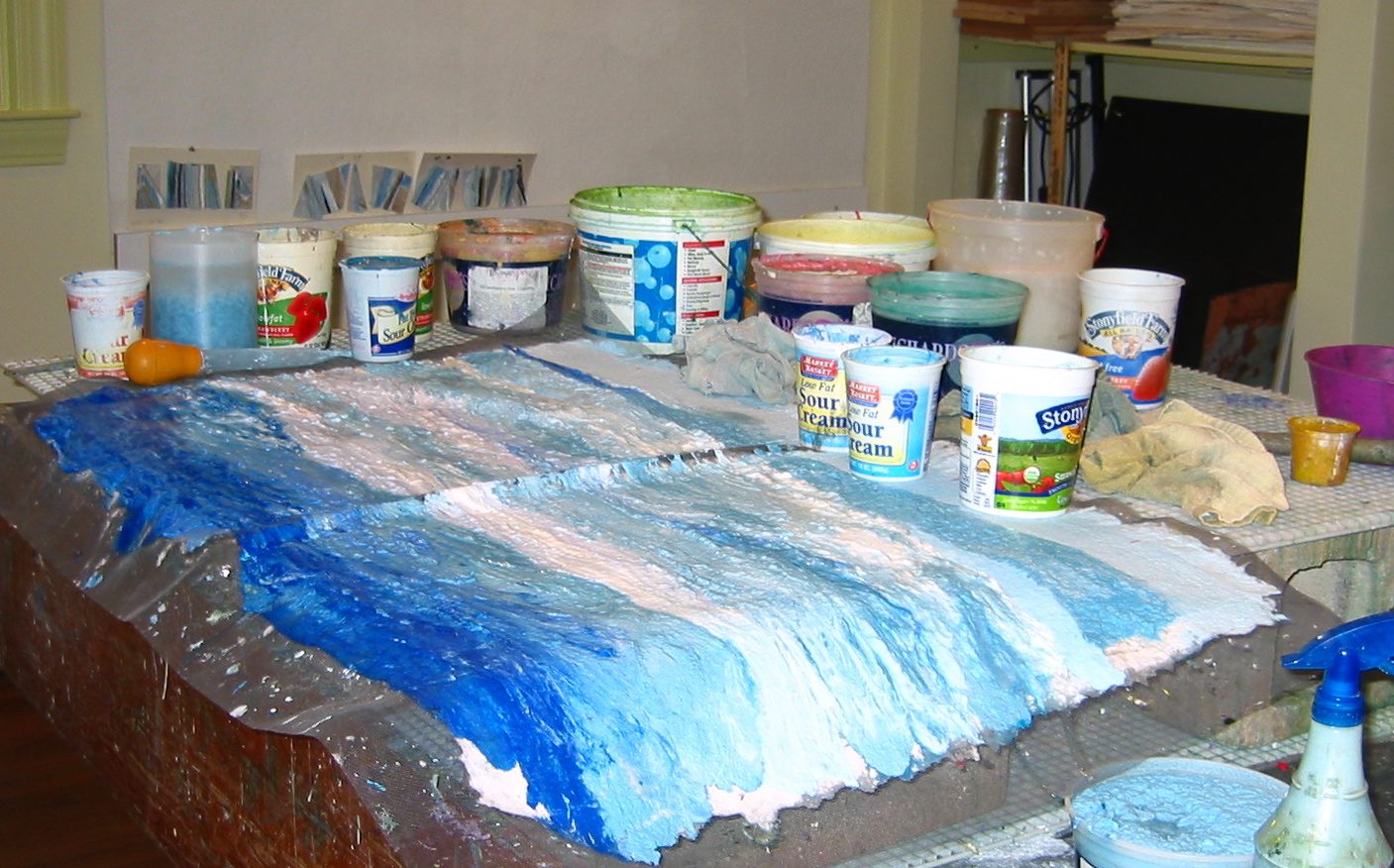
FINAL STEPS
After the painting is finished, I place a plastic drop cloth over the vacuum table and attach a shop vacuum to an opening on the underside of the table. When the vacuum is turned on, the suction of air causes the plastic to shrink-wrap itself to the artwork, thus removing the bulk of the water. After turning off the vacuum and removing the plastic, I remove the artwork from the table and place it under a wool blanket. I then place weights on the blanket to prevent warpage, which is a constant problem during the week to ten days it takes for the paper to dry. And because a certain level of changes occurs during the drying process, the final look of a painting may not be revealed until it is completely dry.
